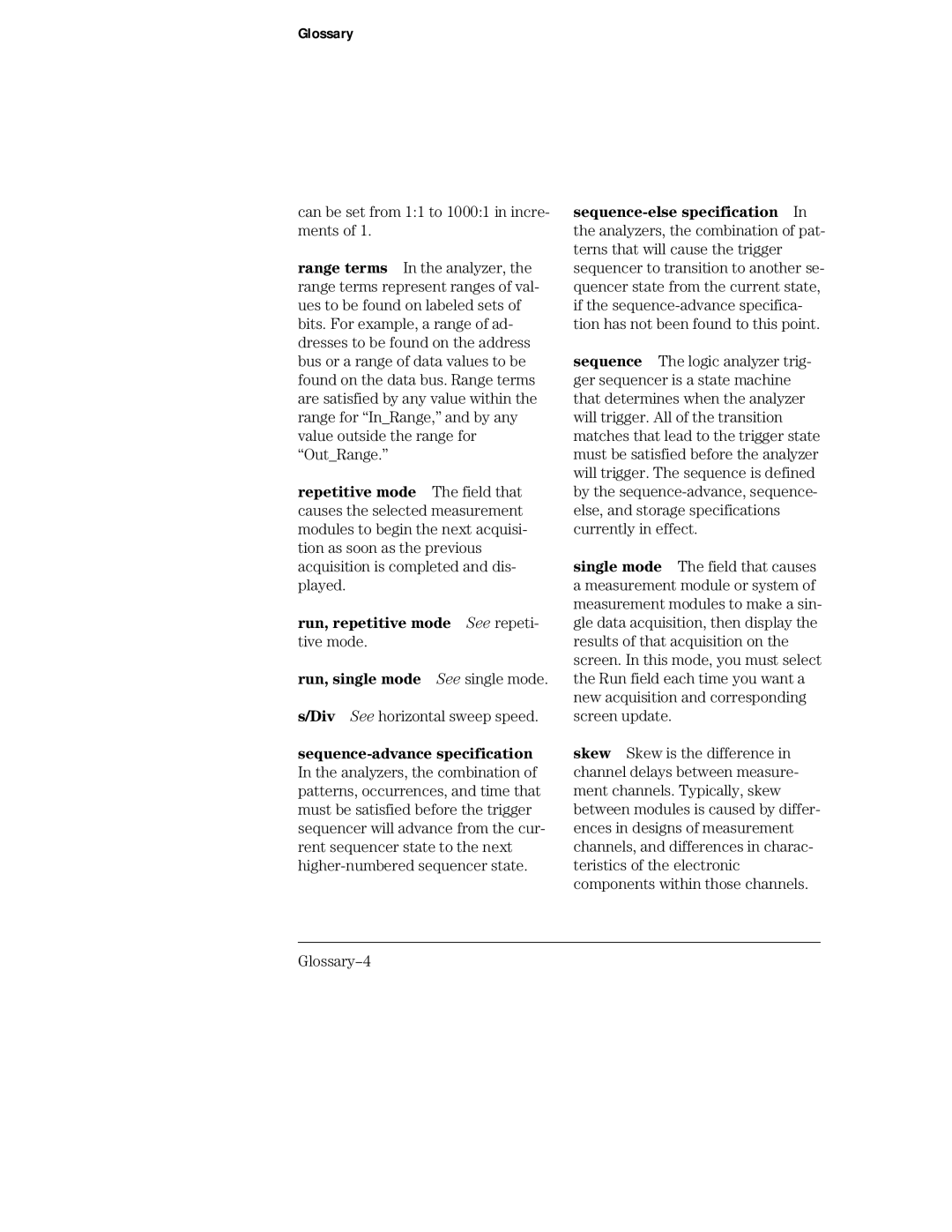Glossary
can be set from 1:1 to 1000:1 in incre- ments of 1.
range terms In the analyzer, the range terms represent ranges of val- ues to be found on labeled sets of bits. For example, a range of ad- dresses to be found on the address bus or a range of data values to be found on the data bus. Range terms are satisfied by any value within the range for “In_Range,” and by any value outside the range for “Out_Range.”
repetitive mode The field that causes the selected measurement modules to begin the next acquisi- tion as soon as the previous acquisition is completed and dis- played.
run, repetitive mode See repeti- tive mode.
run, single mode See single mode.
s/Div See horizontal sweep speed.
sequence-advance specification
In the analyzers, the combination of patterns, occurrences, and time that must be satisfied before the trigger sequencer will advance from the cur- rent sequencer state to the next
sequence The logic analyzer trig- ger sequencer is a state machine that determines when the analyzer will trigger. All of the transition matches that lead to the trigger state must be satisfied before the analyzer will trigger. The sequence is defined by the
single mode The field that causes a measurement module or system of measurement modules to make a sin- gle data acquisition, then display the results of that acquisition on the screen. In this mode, you must select the Run field each time you want a new acquisition and corresponding screen update.
skew Skew is the difference in channel delays between measure- ment channels. Typically, skew between modules is caused by differ- ences in designs of measurement channels, and differences in charac- teristics of the electronic components within those channels.
